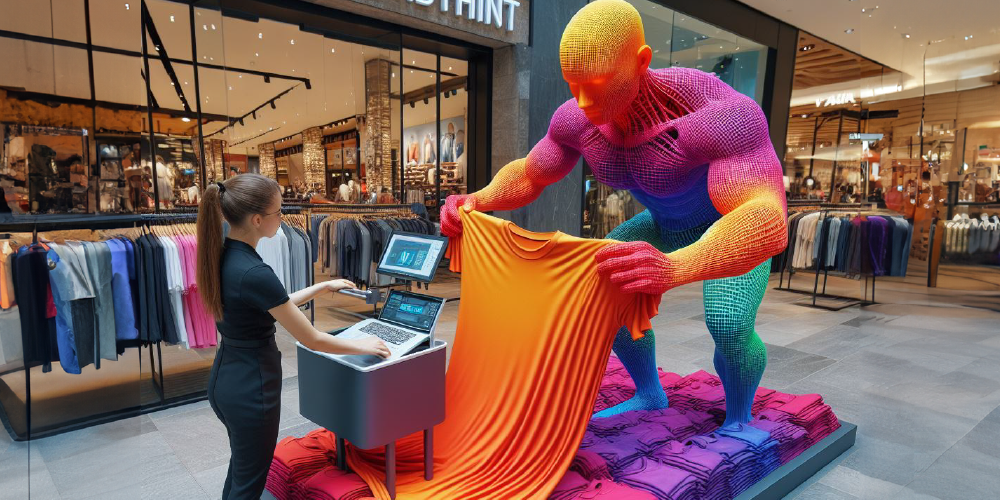In the ever-evolving digital age, image quality has become more and more important in determining how customers interact with eCommerce. With their unmatched capacity to convey a wide range of messages and successfully sell products in ways that words alone could never accomplish, images have emerged as the ultimate show-stoppers. Despite this, maintaining and managing high-quality photos can be a difficult undertaking given the ongoing inflow of image data. It is at this point that the power of image data quality models is clearly demonstrated.
The Importance of Image Data Quality Checks in eCommerce
Image data quality carries profound implications for eCommerce, and its significance becomes evident due to various factors:
Efficient Product Evaluation: High-resolution images empower potential buyers to meticulously evaluate a product before purchasing.
Boosting Customer Confidence: Accurate and high-quality images cultivate customer trust and confidence, reducing return rates.
Enhanced User Experience: Superior image quality leads to heightened customer engagement, elevating the overall user experience and improving conversion rates.
These are just a handful of the many factors, but they are all equally important in the intensely competitive environment of modern eCommerce. The manual upkeep of these quality checks, however, can be challenging and frequently prone to human error. We embarked on a quest to evaluate alternative machine learning models created expressly to carry out these checks with higher effectiveness and efficiency in order to address these limitations.
Essential Image Data Quality Checks for eCommerce
Image Dimensions: It is imperative to ensure that product images possess the appropriate dimensions to offer the best possible visual representation of the product.
Validity of Image URL: Confirming the fact of the image URL is crucial to ensure that the image loads correctly and displays on the site.
No Borders and Background: For optimal presentation, images should be devoid of borders, with the background being either a solid color (typically white) or transparent.
Check for Duplicates: Duplicate images can lead to confusion, necessitating a thorough check to eliminate them.
Text & Logo Detection: Any embedded text or logos within the image should be detected and confirmed to align with your brand identity and not infringe on any copyrights.
Watermark Detection: Watermarks can detract from the overall image quality; hence, it is essential to detect and, when necessary, remove these watermarks.
Color: Examination of the background color (BG color) and the object’s color is vital. Consistency in BG color reduces distraction, and understanding the object’s color aids product categorization.
Human Detection: Depending on your company’s policy, no one should inadvertently capture any human in the product images.
Product Occupying Image Area: Images where the product does not occupy a sufficient portion of the total image’s view can make the product appear small or insignificant.
Image Margins & Centering: Proper image margins and centering create a professional and appealing presentation.
Product Category: Each image should be associated with the appropriate product category.
Image Focus/Blur Detection: Blurry or out-of-focus images should be identified and replaced with more precise, detailed alternatives.
The Models: Description, Use, and Results
We conducted tests employing multiple image data quality models, each showcasing unique features and potential applications for retail and eCommerce platforms.
For checking Image dimensions, Image File Size, Image Resolution (DPI/PPI), Image Count, Image Format, Aspect Ratio (Width/Height), and validating URLs, we harnessed the metadata of the image, which provided us with a remarkable 100% accuracy rate.
When it came to ensuring images were free of borders and text, we selected ResNet50. ResNet50 is a variant of the Deep Residual Learning for Image Recognition model, known for its effectiveness in object localization, image classification, and explicit content detection. This model, borrowed from Deep Residual Learning for Image Recognition, achieved accuracy rates of 82.57% (border detection) and 95.26% (text detection), respectively.
We employed Hashlib, a Python module that offers various hashing algorithms to detect duplicate images. It oversees exact photos by comparing hash values, primarily for data integrity checks and duplicate data detection. This Python module demonstrated remarkable efficiency, delivering a flawless 100% accuracy rate.
To tackle more complex tasks such as watermark and human detection, we opted for convnext_tiny (a convolutional neural network model designed for watermark detection) and YOLO V3 (You Only Look Once, a real-time object detection system used for detecting objects in images or video), respectively. Both models exhibited impressive accuracy rates of 94%.
For the background color, object color, and product occupying image area checks, we leveraged U2NET (used for salient object detection to separate the object from the background) and ColorThief (which extracts the color palette from an image) model to ensure that the aesthetic appeal of images met the desired standard. These models consistently achieved accuracy scores of around 90%.
Image background checks, on being entrusted to VGG 16 (a convolutional neural network model proposed by K. Simonyan and A. Zisserman from the University of Oxford, primarily used for large-scale image recognition), which yielded an impressive accuracy score of 99.09%. Meanwhile, ResNet50 handled product category checks with an accuracy of 85%.
All these models have demonstrated tremendous promise, with their accuracy rates consistently reaching impressive levels. It suggests a future where manual checks may become obsolete.
Precision at its Best: A Closer Look at the Results
Upon reviewing our test results, it becomes evident how machines can substantially enhance efficiency in performing image quality checks.
For example, the Hashlib model and metadata of the image performed exceptionally well, achieving perfect scores. This remarkable accuracy significantly reduces the time required for such checks and ensures that no duplicates go unnoticed.
Other models, such as ResNet50 for text detection and convnext_tiny for watermark detection, also delivered impressive results, further enhancing confidence in the quality of images on eCommerce platforms.
For specific tasks involving background color identification, object color assessment, and product occupying image area checks, the U2NET and ColorThief models proved highly effective.
The Future of Image Data Quality Checks in eCommerce
The outcomes of our model testing for image data quality checks explicitly demonstrate the enormous potential of machine learning in eCommerce. Machine learning is an intriguing solution because of its impressive mix of high accuracy rates, efficiency, and time-effectiveness. eCommerce systems may stand out from rivals and improve customer satisfaction and trust by having the capacity to do extensive quality checks. Future technical developments will surely continue to have positive effects and significantly improve the eCommerce environment. The importance of high-quality image data in eCommerce will inevitably rise rapidly as we move forward in this exciting digital age, and securing this quality will undoubtedly require utilizing these cutting-edge machine learning models.






